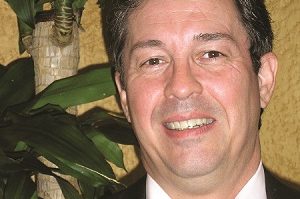
The FCC says it’s okay for noncommercial AM stations in Alaska to install Dynamic Carrier Control with no further authorization; they just need to send in a notification, according to Nautel. The commission will modify the license accordingly. Previously, those stations needed experimental authorization to use DCC.
Nautel DOE Tim Hardy has been championing this technology, which uses carrier control algorithms (PDF) in AM transmitters to save stations money on operating costs by reducing the carrier without reducing overall transmitter power.
“This technology has been an option on our high-power AM transmitters (>100 kW) since the mid 1990s,” said Hardy. He said it originally was developed in Europe in the 1980s. “We made it a standard part of our NX series transmitters which are available at 25 and 50 kW in the U.S. DCC offers a tremendous power savings advantage for broadcasters willing to implement it.”
Alaska Public Broadcasting Inc. DOE Chuck Lakaytis said saving on power costs is a big deal everywhere, but especially in Alaska, where diesel fuel cost more than $7 a gallon last summer.
Lakaytis obtained experimental authorization to use DCC on two transmitters, KOTZ(AM) in Kotzebue and KDLG(AM) in Dillingham. In Kotzebue, the station is using the technique with a Harris DX-10 transmitter; those tests have just begun. In Dillingham, KDLG is using a Nautel XR-12 transmitter; Nautel provided a special DCC system from a modified digital exciter from its NX series.
In three months of operation, DCC is saving KDLG from 27% to 30% a month for the whole site on its electric bill, according to Lakaytis, who estimated the electricity costs at his Dillingham site at around 30 cents a kilowatt hour now, and as high as 48 cents per kilowatt hour.
Nautel believes DCC may have applications in the rest of the U.S. if commercial and non-commercial AMs obtain FCC permission to use the technique. Hardy estimates that for the average high-powered AM transmitter, DCC would save 30 to 50% off power consumption for the transmitter itself. “It would be fairly easy to save $20,000 a year if you have a 50 kW AM transmitter running 24/7, based on modest electricity rates of 10 cents per kilowatt hour.”
Lakaytis says KDLG has not experienced a decrease in audio quality or coverage since it began using DCC three months ago. He plans to expand DCC to Alaska Public Broadcasting’s four other AMs that have 10 kW transmitters, in Bethel, Barrow, McGrath and Homer. KYUK(AM) Bethel and KBRW(AM) Barrow also have Nautel transmitters and will use Nautel DCC equipment. KSKO(AM) McGrath and KBBI(AM) Homer have Harris DX-10 transmitters and will use Harris DCC equipment.
So far, the technique is being used on analog AMs. Lakaytis is curious to see if DCC and HD can work together, he said.
He plans to present a paper on how DCC is working in Alaska at the NAB Show; Nautel is conducting a webinar on the topic.







